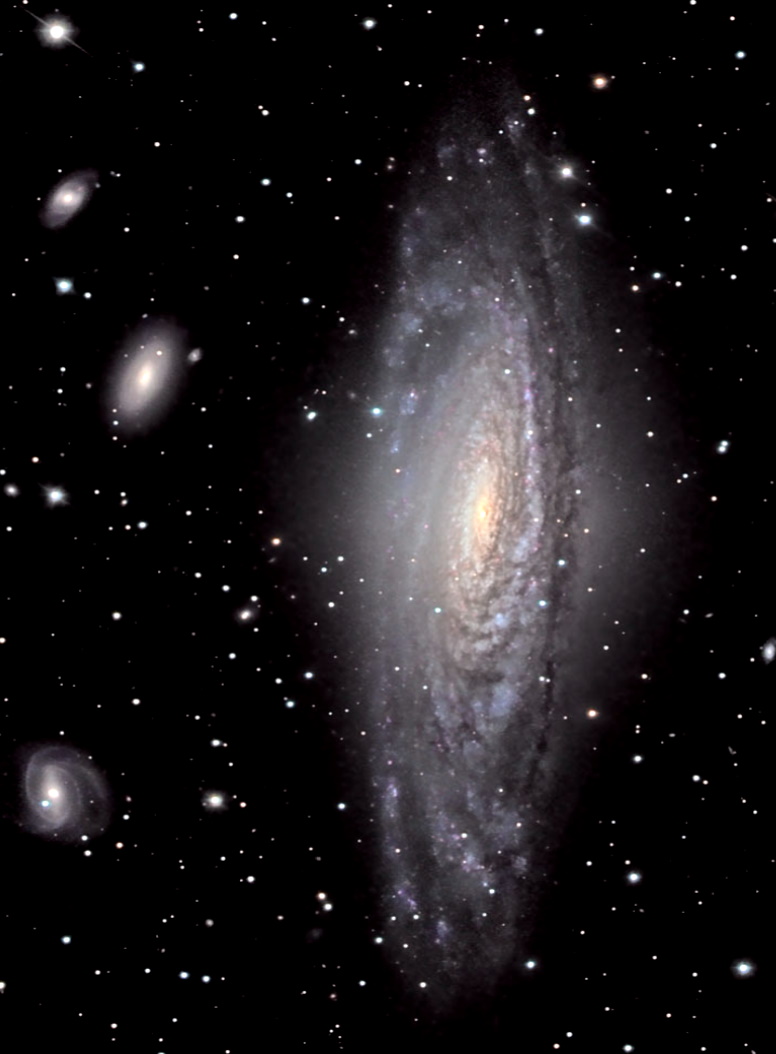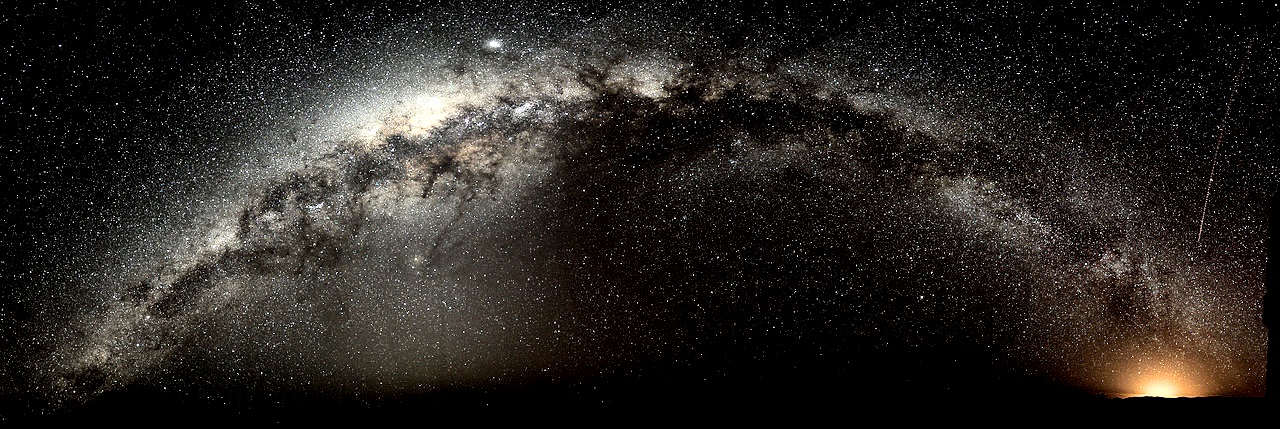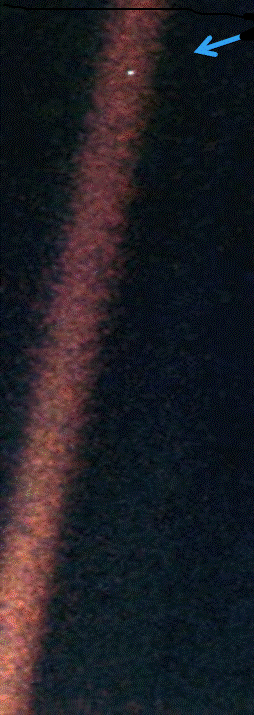Our Place in
the Universe
In his book,
Pale Blue Dot, the late
Carl Sagan (1934–1996) describes
our place in the Universe:

 Carl Sagan was a prolific observational astronomer, renowned astrophysicist, and the author of several inspiring books. His book about the Cosmos (1980: Random House, New York) was the foundation of a television series that became the most watched educational television program in American history.
Look again at that dot. That's here. That's home. That's us. On it everyone you love, everyone you know, everyone you ever heard of, every human being who ever was, lived out their lives. The aggregate of our joy and suffering, thousands of confident religions, ideologies, and economic doctrines, every hunter and forager, every hero and coward, every creator and destroyer of civilization, every king and peasant, every young couple in love, every mother and father, hopeful child, inventor and explorer, every teacher of morals, every corrupt politician, every 'superstar,' every 'supreme leader,' every saint and sinner in the history of our species lived there—on a mote of dust suspended in a sunbeam.
Carl Sagan was a prolific observational astronomer, renowned astrophysicist, and the author of several inspiring books. His book about the Cosmos (1980: Random House, New York) was the foundation of a television series that became the most watched educational television program in American history.
Look again at that dot. That's here. That's home. That's us. On it everyone you love, everyone you know, everyone you ever heard of, every human being who ever was, lived out their lives. The aggregate of our joy and suffering, thousands of confident religions, ideologies, and economic doctrines, every hunter and forager, every hero and coward, every creator and destroyer of civilization, every king and peasant, every young couple in love, every mother and father, hopeful child, inventor and explorer, every teacher of morals, every corrupt politician, every 'superstar,' every 'supreme leader,' every saint and sinner in the history of our species lived there—on a mote of dust suspended in a sunbeam.
 The Blue Dot was photographed by several spacecraft. The photograph shown on the right was taken in July 2013 by NASA's Cassini spacecraft at a distance from Earth of approximately ~1,500,000 kilometers (~900,000 miles). This is our place in the Universe.
The Blue Dot was photographed by several spacecraft. The photograph shown on the right was taken in July 2013 by NASA's Cassini spacecraft at a distance from Earth of approximately ~1,500,000 kilometers (~900,000 miles). This is our place in the Universe.
Viewing Earth from Space
Images shown on these pages are not artists' renditions of telescopic observations. Despite some of these images appearing to be modern abstract oil paintings, these are real images of galaxies and nebulae.
Note: hurricane, cyclone, and typhoon are synonyms for "spiral-shaped" storm clouds, while a tornado forms a "funnel-shaped" storm cloud.
Viewing Space from Earth
Our Sun resides in the outer reaches of one spiral arm among billions of other stars. Some astronomers suggest that life as we know it on Earth has a high probability of existing elsewhere in the Universe as well. Recent discoveries of water on Mars enhance the possibility.
 NASA's space-based Spitzer Infrared Telescope captured this image of NGC 7331, which is located about 50-million light years from Earth, and is a virtual twin of the Milky Way Galaxy.
NASA's space-based Spitzer Infrared Telescope captured this image of NGC 7331, which is located about 50-million light years from Earth, and is a virtual twin of the Milky Way Galaxy.
We cannot observe the entire Milky Way Galaxy from the Earth, because we are inside the galaxy. We can, however, observe other similar galaxies to try to better understand our own galaxy.
From within the Milky Way Galaxy, the Spitzer space-based telescope is currently photographing galaxies in our "neighborhood". To see behind galactic dust clouds, Spitzer is photographing in several infrared wavelengths. Over the next few years, photographs taken in other wavelengths, including radio wavelengths, will be combined to form highly detailed maps of our celestial neighborhood.

.jpg) Although the Sombrero Galaxy (M104) is a spiral galaxy, it looks like a Mexican hat, or sombrero, when viewed edge-wise from the vicinity of Earth. The brim of the hat is an edgerise view of the spiral arms. Notice the brightness along the vertical axis, especially at the center. "Black holes" are often found at the center of spiral galaxies.
Although the Sombrero Galaxy (M104) is a spiral galaxy, it looks like a Mexican hat, or sombrero, when viewed edge-wise from the vicinity of Earth. The brim of the hat is an edgerise view of the spiral arms. Notice the brightness along the vertical axis, especially at the center. "Black holes" are often found at the center of spiral galaxies.
One arm of the Milky Way Galaxy is visible in the evening sky; however, light pollution from cities and from the Moon obscures many of these stars. Consequently, large optical telescopes are built on isolated mountaintops that are far away from the glow of city lights. Also, location at high altitude, where the air is thin, improves image quality.
Our own Milkey Way Galaxy is a "spiral" galaxy, which is about 110,000 lightyears in diameter and is about 1,000 lightyears high, or thick. Spiral galaxies in general form as big, flat pancakes with spiral arms stretching outward from a bright, bulging center, like an earthly hurricane or similar to the shape of a snail's shell.
Earth is located in the outer reaches of one of our galaxy's spiral arms, about 27,000 lightyears from the center of the galaxy. Our entire solar system revolves around the center of the galaxy about once every 250 million years. To place this timeframe into perspective, the Earth had one big land mass, called Pangaea about 250-million years ago. At that time, Pangaea began to separate into the six continents that we have today. Interestingly, Earth's continnts are still moving, which builds mountains, for example the Himalayan Mountains, and is a major cause of "earthquakes".
To continue to explore the heavens,
select a Destination from the dropdown menu at top-left.







.jpg) Although the
Although the